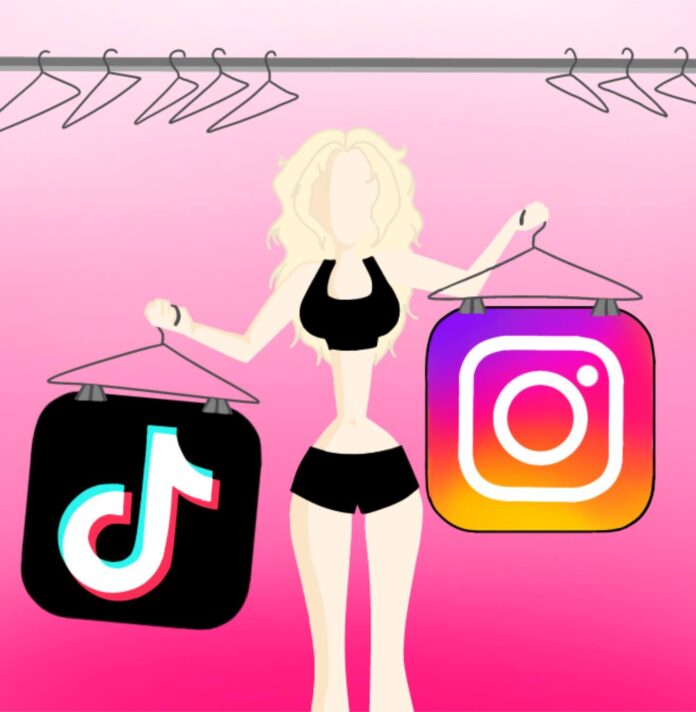I’ll admit it: I bought a Brazil soccer jersey. Not because I watch soccer, or wear jerseys or have any meaningful connection to Brazil. I bought it because I saw someone wear it on TikTok. It looked cute. For a moment, I thought it might make me look cute, too.
It’s a familiar loop: scroll, desire, purchase, regret. But the deeper issue isn’t the jersey, or even the impulse. It’s what this cycle reveals about a fundamental shift in how we relate to fashion, identity and ultimately, ourselves. In the age of social media, personal style, once a form of self-expression rooted in individuality, has become increasingly commodified and homogenized. What we wear is no longer just a reflection of who we are; it is a reflection of how we want to exist within an algorithm.
Historically, style has functioned as a personal signature that develops over time, something shaped by memory, culture, class, subculture, geography and inner life. It wasn’t just about taste, but about consistency, coherence and an evolving sense of self. Think of Audrey Hepburn’s chic capris and ballet flats — a look shaped by elegance and restraint, not virality. Or JFK’s gray marl sweatshirts, penny loafers and Oxford shirts — staples that spoke to privilege, but also a cultivated simplicity.
Of course, branding has always played a significant role in fashion, serving as a signifier of wealth, taste and social belonging. Before social media, we had magazines, newspapers and fashion editors dictating trends in glossy pages. The existence of influence has not changed; rather, the speed and scale of it have. What once trickled down over seasons now floods our feeds daily.
Contemporary fashion culture, especially on platforms like TikTok and Instagram, is shaped by speed, legibility and reward structures that prioritize visibility over originality. Algorithms don’t encourage discovery or experimentation; they incentivize mimicry. Trends that are easy to reproduce and are immediately recognizable perform best. And so, social media doesn’t just reflect taste — it engineers it.
We are no longer developing style; we are downloading it.
Instead of knowing ourselves to dress, we now dress to be known. Clothing becomes a form of social currency in an attention economy, where identity is fragmented into aesthetic templates: the “clean girl,” the “mob wife” and the “eclectic maximalist.” These are no longer subcultures or organic communities — they are marketing categories, each with a shelf life measured in weeks. Individuality has become aesthetic compliance.
This compliance is not merely a cultural problem; it is an economic one. The faster trends change, the more consumption is required to keep up. “Personal style” becomes a subscription model: opt in, refresh often and never fall behind. The result is not just environmental waste, but pure exhaustion.
And yet, this endless cycle of trend adoption doesn’t foster creativity; it stifles it. Everyone ends up dressing the same, not because of a lack of imagination, but because the dominant logic of social media rewards sameness disguised as originality. Even subversion has been aestheticized and rendered palatable. Alternative fashion, once a space for rebellion, queer identity or political resistance, is now just another curated Pinterest board, stripped of context and commodified into trend cycles.
The paradox is glaring. We live in a society that proclaims the value of individuality while structurally rewarding conformity. We glorify uniqueness, but only in forms that remain legible, shareable and ultimately monetizable. Being “different” is permitted, even encouraged — so long as it aligns with what everyone else’s version of different looks like.
Even within the relative privilege of a liberal, urban context, where there’s social freedom to dress how one likes without overt judgment, the freedom often produces its own quiet constraints. In the age of social media, we are no longer dressing just for ourselves or our communities. We’re dressing for strangers we’ll never meet. For followers. For the feed. Self-presentation becomes a form of performance, where every outfit is a statement, a brand extension, a silent audition for attention.
When your self-worth becomes tethered to how effectively you can package your identity, you begin to dress not for your mirror, but for the market. And that market rewards you for being instantly clickable, easily categorized and ultimately, easily replaced. If your style isn’t monetizable, it’s irrelevant. If your aesthetic doesn’t translate well to a square on a screen, it might as well not exist.
Of course, the fashion industry has always profited from insecurity. But today, it isn’t just selling clothes, it’s selling identity, and more dangerously, the illusion that identity can be bought, curated and optimized for public consumption. In this climate, cultivating a personal style — rooted in slowness, experimentation and actual self-awareness — feels nearly impossible. It requires resisting the very systems we’ve learned to rely on for validation.
So what do we do? Perhaps we can start by asking questions that don’t serve the algorithm: Who am I dressing for? What am I trying to express? What would I wear if no one were watching?
Because true personal style doesn’t emerge from saved folders, it arises in the quiet, uncertain spaces where we experiment without needing to impress. It’s not about being “ahead of the trend” — it’s about stepping outside of that cycle entirely. Wearing the same thing, or something weird, or something old, becomes an act of resistance in a culture obsessed with novelty and conformity.
If everyone is dressing the same, then no one is really saying anything. Authentic style doesn’t follow the algorithm; it pushes back against it.
Contact Samhita Krishnan at krishnan@oxy.edu
![]()



































